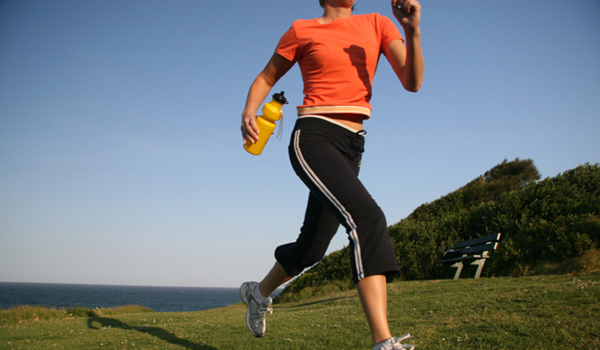Principles of Training: Simple Physiology
To understand how different types of training can improve your running and race times, it is helpful to understand some basic physiology.
Very simply, muscles contract to move your body along the road, round the track or up hills and those muscles need energy to perform – just like your car needs petrol/diesel. Your body produces energy in a variety of ways, the most important being a chemical reaction called oxidative metabolism and the two ingredients of that chemical reaction are glucose (blood sugar) and oxygen. Glucose circulates in your blood and is also stored as glycogen in your liver and muscles. Oxygen comes from your lungs. Both glucose and oxygen are delivered to your muscles through the bloodstream.
As oxygen and glucose are used by your muscles, they need to be replaced so that your muscles can continue to work (think of the motor car again: when you drive you use petrol and you then you need to fill up at a petrol station). The harder your muscles work the faster they use oxygen and glucose and the quicker they need replacing. To speed up this delivery your heart (which is a pump) pumps faster to move blood more quickly to working muscles. Now you can see why the harder and faster you run, the higher your heart and breathing rates become.
Once oxygen and glucose get to your muscles your body has to process them ever quicker to produce energy, your body has a maximum speed at which it can use oxygen – this is called VO2max. It has absolutely nothing to do with the size of your lungs or your breathing rate – it means the ability of your muscles to make use of the oxygen that is delivered to them. The real beauty of this is that you can improve this ability by training at high intensity, forcing your body to use oxygen at a high rate.
Aerobic and Anearobic Activity
When you run you need oxygen and your muscles use this oxygen to produce energy as explained above. This is called Aerobic running.
The faster you run, the faster your heart beats to get the oxygen and glucose to your muscles, but there comes a point when your muscles simply cannot process oxygen fast enough to produce the energy you need. I am sure that we have all felt the sensation of legs just not having the strength to continue – this is Anaerobic running.
There are several by-products of anaerobic running which causes your muscles to shut down, one of them being lactic acid.
It is a mistake to think that lactic acid brings on muscle fatigue it is these other by products that actually cause the muscles to shut down. By training at high intensity, you train your muscles to maintain intensity despite the accumulation of these metabolic by-products, plus your body becomes more efficient at removing these by-products more quickly.
To sum up: with the right kind of high intensity runs you will end up running faster without fatigue.
Endurance:
This is the ability to run at a given pace over a long period of time. You can improve your endurance by increasing your weekly mileage, but the more efficient and effective way (and more common) is a weekly long run.
Speed:
Most runners when they think about speed training imagine interval training around a track and although an extremely efficient form of speed work it is far from being the only method. Please visit: Training Programmes – Terminology for a greater insight into different forms of speed work.
Similar Posts:
- Principles of Training: Simple Physiology
- How, When, & Why To Add Speedwork To Your 10K Training Plan
- Running For Cardio Training Really Does Matter
- An Introduction to 5k Training
- The Principles of Training
- How To Run Your Fastest 10K Yet




Add Comment